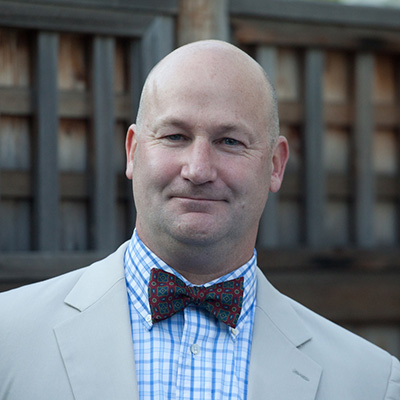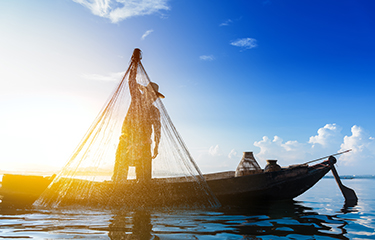Ned Daly is a sustainability strategist at Diversified Communications and lead of the Seafood2030 project.
There is a striking similarity between the effort required to run a seafood business and the work that needs to be done to make the industry at large more sustainable.
That is one major finding of the Seafood2030 project, which has been working with industry and other seafood stakeholders to understand how best to design and align future sustainable seafood efforts.
Success in the complicated world of seafood sustainability often begets more complexity, a truth accomplished businesses are well aware of. According to a survey of seafood business executives, neither a lack of finances, resources, nor capacity were identified as major barriers to continued advancements in the seafood sustainability movement – rather, the majority identified the biggest problem as “coordination failure of the global sustainable seafood system caused by overwhelming complexity.”
The marketplace for sustainable innovation and solutions has grown to offer seafood companies a variety of certifications, fishery improvement project (FIP) opportunities, partnerships, audits, and other tools to help them improve their purchasing and practices. Unfortunately, this robust marketplace of innovation is also leading to confusion in the industry, upsetting the alignment of these efforts in a way that does not maximize the collective impact on seafood’s sustainability challenges.
Today, seafood business leaders are busier than ever, as they deal with a rapidly evolving marketplace and the complications caused by the COVID-19 pandemic. While many are committed to advancing seafood sustainability, the additional complexity they face in that realm represents the primary impediment to progress, and so studying and working to solve that problem has become the mission of Seafood2030
In the global seafood industry, much of the low-hanging fruit is gone in terms of “easy” implementation of sustainable and responsible practices.
At Seafood2030, we compare this issue to that of another common business challenge: “last-mile logistics.” For the sustainable seafood system, this refers to fisheries, geographies, and sectors that are not easily leveraged by traditional sustainable markets and supply chains.
Crossing the chasm
The seafood industry has its share of innovators and early adopters willing to experiment with new methods of addressing sustainability challenges. However, in general, these actors have limited reach. And while the sustainable seafood system has worked diligently to find ways to increase adoption with the majority of the industry, it is not clear that current collective efforts of the sustainable seafood system are driving broad-scale change, despite occasional outlying success stories.
There has been a great deal of market research and theory around innovation adoption since the end of World War II, and a study of this research reveals the sustainable seafood system has been acting like most other markets in its efforts to effect change. One suggestion for moving to a more representative model for uptake of innovation in the broader marketplace stems from an innovation adoption theory developed by Geoffrey Moore and embraced by the technology sector. This model calls for “crossing the chasm” between early adopters and the industry at large through the creation of a bandwagon effect, leading innovation to become standard practice.
Industry-driven efforts like the Sustainable Fishery Partnership’s Supplier Roundtables, Sea Pact, and GSSI are good examples of how this can be done, as they each focus their efforts on the entire seafood industry, not just their members. Other seafood-focused entities with a global vision include The Global Dialogue on Seafood Traceability, which is creating greater industry alignment and efficiency on sustainability initiatives, as well as supply chain traceability; the Global Tuna Alliance, which is aligning support for more responsible tuna management; and SeaBOS, which is guiding sustainability work of seafood’s largest companies. These three entities have worked together to develop a “meta-collaboration” of more than 150 companies working to find solutions to ending illegal fishing.
Exploit and explore
One fundamental dichotomy potentially undermining the alliance between the seafood industry and the nonprofits and non-governmental organizations working to make it more sustainable is their fundamentally oppositional approach to the so-called “exploit versus explore” balance. Every company faces the challenge of “exploiting” its existing business plan so it can sell fish, pay employees, and keep the lights on – while also “exploring” new business opportunities and identifying potential market obstacles. Businesses tend to “over-exploit” and “under-explore,” leading to missed opportunities and sudden roadblocks, while the sustainable seafood system tends to do the opposite – “over-explore” and “under-exploit” – focusing more on innovation development and less on adoption.
For businesses, leaning on nonprofit organizations and NGO partners to help them “explore” could aid them in mitigating the cost in time and expense it will take for them to tackle more entrenched seafood sustainability issues. And on the flipside, the sustainable seafood system’s generally narrow focus on innovation development must be simplified and streamlined, as currently there’s a saturation of tools that are difficult to align, impeding meaningful impact.
Precompetitive models that embrace partnerships or collaborations with independent or third-party entities focused on sustainability issues could be a solution to this divide. The International Sustainable Seafood Foundation (ISSF) stands as a fantastic example of an industry-led effort working to manage the incredibly complex world of tuna in a traditional pre-competitive collaboration model. ISSF works to increase the collective impact of sustainability efforts in tuna fisheries while also developing research and data to help shape future opportunities to support a more sustainable and responsible tuna industry – a demonstration of an “exploit and explore” scenario.
Making small metrics = big success
There is no question that certification programs are having increasing success when it comes to engaging new fisheries and companies; FIPs are being implemented in new geographies, the number of companies implementing social audits has increased, and the number of NGO-industry partnerships continues to grow. But it is not clear if existing efforts are effectively addressing illegal fishing, human rights abuses, or other serious challenges facing the industry. And it is not clear if we are designing this work in a way that efficiently deploys the seafood industry’s resources and investment in sustainability efforts. The lack of coordination of the system – money, resources, capacity, and individual efforts – is now our biggest challenge.
There will always be a need for innovation development around sustainability. The recent development of a “policy FIP” to address the misalignment of total allowable catches (TACs) in European countries, resulting in the loss of Marine Stewardship Council certification for some fisheries, is an excellent example of two industry collaborations – the North Atlantic Pelagic Advocacy Group (NAPA) and the Sustainable Seafood Coalition — driving real change through innovation.
Seafood companies have a great deal of expertise and experience in developing and managing complex supply chains, as well as coordinating, leveraging, and growing departmental or branch success into enterprise success. This work is intuitive to companies, and the ability to manage collaboration and competition are two reasons why industry leadership will be key in making seafood more sustainable and more attractive in the broader protein market in the future.
And that is now the work that must be done. The sustainable seafood system has done a very good job differentiating the most sustainable products in the marketplace, but now we need to focus on innovation adoption throughout the industry to differentiate seafood as the most sustainable product in the protein market.
When we look at the sustainable seafood system as a single entity, it provides the opportunity to recognize how to maximize the return to industry on its sustainability investment and the importance of leadership in solving future challenges. There is a great deal more to learn and ample opportunity to do so at https://www.seafoodsource.com/seafood2030.
Photo courtesy of Rachaphak/Shutterstock







